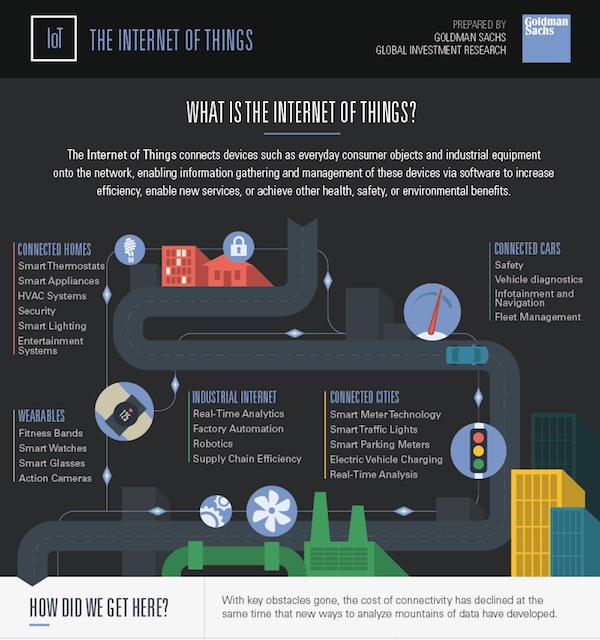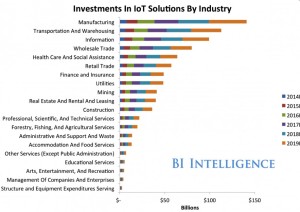The next era in the advancement of the Internet is called the Internet of Things (IoT). Aptly named, the Internet of Things includes all of the devices and services that are now connected to the Internet, like your phone, iPad, computer, FitBit, television, coffee maker….
The number things that are in design and production that will be connected in the near future is growing at an exponential rate. The attached infograph from Goldman Sachs does a great job of explaining IoT and the growth in the future (see the complete infographic on their website).
So I came up with some variations for Higher Education:
IoWHNDITWB – Internet of We Have Never Done It That Way Before
IoTN – Internet of Tenure – No
IoAA – Internet of Antiquated Accreditation
IoSMTSTF – Internet of Students Are More Tech Savvy Than Faculty
IoYCTTO – Internet of You Can’t Teach That Online
IoPOH – Internet of Physical Office Hours
IoNOTT – Internet of Not Offered This Term



 Samsung just announced that by 2017, 90 percent of all of its devices sold would be Internet-enabled. This is a big statement considering Samsung sold over 665 million products last year. If that’s not enough, the platform will be open, allowing developers to build other compatible software and hardware to interact with those devices.
Samsung just announced that by 2017, 90 percent of all of its devices sold would be Internet-enabled. This is a big statement considering Samsung sold over 665 million products last year. If that’s not enough, the platform will be open, allowing developers to build other compatible software and hardware to interact with those devices.